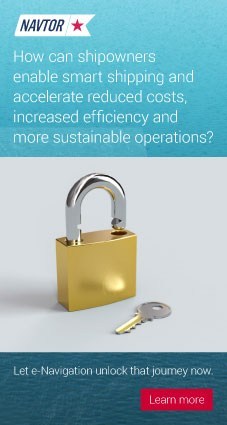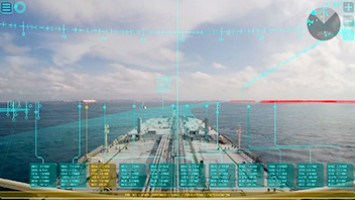In a recently released report from the United Kingdom’s Maritime Accident Investigation Bureau (MAIB) a ro-ro freight ferry Seatruck Performance was found to have grounded en route to the UK from Northern Ireland as a result of the crew failing to use electronic navigation charts (ENC) “effectively”.
Seatruck Performance grounded in transit through the Greenore Channel in Carlingford Lough, Northern Ireland on 8 May 2019 according to the MAIB, “the ferry’s outbound passage had not been sufficiently planned and, specifically, the effects of squat had not been adequately considered.”
In addition, the MAIB found that the master was “mainly navigating by eye,” and was not receiving the expected level of support by other officers on the bridge. But it is the effects of squat that should catch the eye for container ship operators. Squat in the maritime sense is where a vessel travelling within a shallow channel creates a hydrodynamic effect that lowers the vessel in the water, so it is closer to the seabed, than would normally be the case.
 Events such as the Seatruck Performance incident caused a 10m gash in the hull and required an expensive three-week drydocking for repairs on the vessel.
Events such as the Seatruck Performance incident caused a 10m gash in the hull and required an expensive three-week drydocking for repairs on the vessel.
The accident, like most accidents, was avoidable in as much as the use of modern ENC equipment can offer crew unprecedented views of what is below the vessel and how close it is to the seabed. And that could be crucial according to Tor Svanes, the founder and CEO of electronic navigation systems provider, NAVTOR.
According to Svanes the new higher resolution ECDIS systems due to be introduced in 2024 will have “better metric data displayed.” The greater detail will offer masters a clearer view of the area in which they are travelling with better information on the seabed.
“If a container ship can load another 50 containers because it is certain about the route it is taking and it knows what depth the waters are in each area then that’s lots of money and it will have an impact on the work,” Svanes explained to Container News.
Up to now ENC’s have been used to route vessels in the most environmentally friendly way, using weather routing maps and voyage planning tools. However, the latest generation of equipment has many add-ons attached allowing crew a great deal of supplementary information, through a comprehensive data base including such details as regional regulations and the seamless updating of charts.
In Svanes’ opinion ECDIS is here to stay and all vessels will shift to the systems in time, particularly given that young navigators are more tuned into the electronic format and the benefits it can bring compared to their more experienced colleagues.
These systems will change the way crew are trained and operate and they will offer greater safety. Should the new systems prevent one, comparatively minor incident, such as the Seatruck Performance accident, then ECDIS will have been a smart investment. By allowing crew to increase loading it will have a tangible benefits to the system that will offer a return on the original investment.







